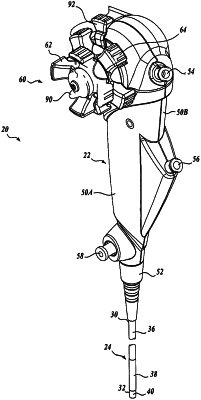| CPC A61B 1/0052 (2013.01) [A61M 25/0147 (2013.01)] | 20 Claims |

|
11. A method of operating a medical device, the method comprising:
rotating a braking member about a longitudinal axis of the braking member, from a first configuration, to a second configuration, wherein the braking member includes a radially-inwardly-facing surface having a first portion extending a first distance from the longitudinal axis and a second portion extending a second distance from the longitudinal axis, and wherein the rotating causes the braking member to rotate relative to a cam member; and
as a result of the rotation of the braking member, engaging the radially-inwardly-facing surface of the braking member with a radially-outwardly-facing surface of the cam member, wherein, in the first configuration, the radially-outwardly-facing surface of the cam member is opposite the first portion of the radially-inwardly-facing surface of the braking member, and wherein, in the second configuration, the radially-outwardly-facing surface of the cam member is opposite the second portion of the radially-inwardly-facing surface of the braking member, such that, in the second configuration, movement of at least a portion of a shaft of the medical device is restricted.
|